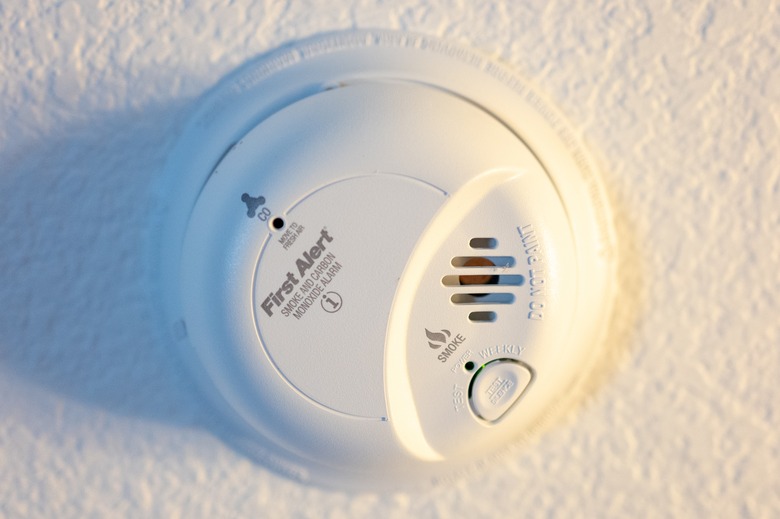How To Recycle A First Alert Smoke Alarm
We may receive a commission on purchases made from links.
Who hasn't done a forehead slap and thought, "I should've recycled that!" just as the garbage collectors were pulling away from the curb? Here's the thing: If what you tossed was the aging First Alert smoke alarm you pulled off your ceiling, it may or may not belong on the truck. Some can be tossed with the garbage and never recycled, while others can be tossed or recycled through First Alert. It all depends on the type of alarm and on your municipal waste program guidelines.
About First Alert
About First Alert
The makers of the First Alert brand are known for a list of innovative firsts in the home safety products industry, including the first battery-operated smoke alarm and the first dual-sensor alarm. The company has a reputation for strong community involvement and for partnering with retailers, schools, firefighters and other organizations to promote fire-safety education. They frequently donate equipment to nonprofits and fire departments around the country and work with the National Volunteer Fire Council on a donation program that provides low-income community members with smoke alarms.
Their commitment to being socially responsible is also evident in the recycling program they make available to their customers. First Alert is one of several manufacturers that allow customers to return certain types of smoke alarms to them for recycling.
Why Some and Not Others?
Why Some and Not Others?
The most common types of smoke detection technologies are photoelectric and ionization. Photoelectric alarms respond better to smoldering fires. They contain no radioactive materials and, after the batteries are removed for recycling, can just be tossed with regular household waste. However, smoke alarms with ionization-sensing technology, which respond to flaming fires, contain a small amount of radioactive Americium 241. They may need to be handled differently, but not for what may seem the obvious reason.
The level of Americium 241 found in ionization alarms is basically undetectable. The First Alert website refers to studies showing that the radiation a person would absorb by standing constantly for one year next to a smoke alarm would be less than what would be absorbed from watching TV. Yet, in spite of entities such as the U.S. Nuclear Regulatory Commission, the National Council on Radiation Protection and Measurements, the Department of Energy and the National Fire Protection Association supporting that the disposal of ionization alarms is safe, some municipalities prohibit their disposal into municipal waste.
One surprising reason? If an ionization alarm is tossed into the trash where municipal waste is incinerated, it can set off radiation alarms, resulting in the load being rejected. So, check with your local waste-recycling facility to see whether they accept this type of product. Regardless of the answer, you have the option of using First Alert's recycling program.
How First Alert Helps
How First Alert Helps
You have to pay the postage, but First Alert will accept up to four ionization smoke alarms from the following brands: First Alert, BRK, Onelink and Family Gard. The alarms should have an (i) — indicating ionization — on the back. If you have more than five, they'll dispose of them for a small fee. They salvage and recycle certain components from the alarms, but some parts, due to the presence of flame-resistant additives in the plastics, can't be recycled and will be disposed of.
If you have alarms to send, simply fill out First Alert's customer support form. They will respond with a return address and reference number.
When To Replace Your Alarm
When To Replace Your Alarm
The U.S. Fire Administration states that you should replace all smoke alarms every 10 years. If you don't know the age of your alarm, remove it from the wall or ceiling and check the date of manufacture on the back. Test the alarm monthly by pushing the test button. If your unit begins chirping, replace the battery. If that doesn't stop the chirping, or if there are other indications that the alarm isn't functioning properly, replace the entire unit regardless of the manufacturing date.
